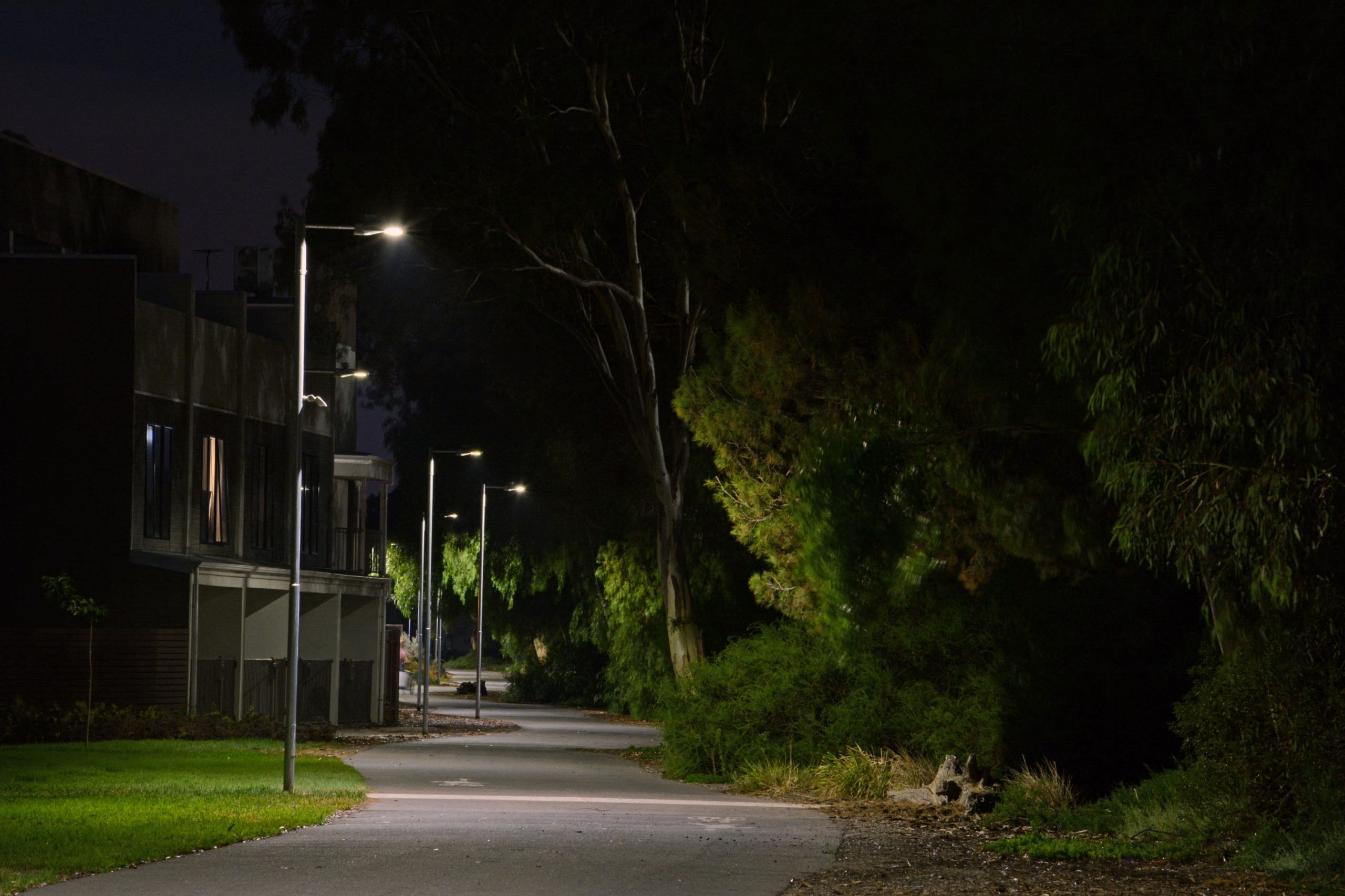Project Background
We recently installed 50 LED (light emitting diode) lights along the Outer Harbor Greenway walking and cycling path in St Clair (between Woodville and St Clair train stations). Featuring smart lighting technology, the new LED lights are able to be remotely managed which will not only help us to effectively maintain the lights, but also enables the use of motion activation to increase or decrease light output depending on usage.
There are 13 light poles fitted with sensors which will increase lighting when activated by a pedestrian or bike rider. Controlling light output will use less energy and produce less glare to neighbouring properties. When the path is not in use, the lower lighting level will provide a more comfortable environment for wildlife and animals that are active during the night, helping to protect our nature and environment.
The aims of the trial are to:
- Test new technologies to reduce energy consumption, while providing a great lighting service when required.
- Assess and enable the ability to control brightness from an offsite location
- Assess any impact of changing lighting levels on nearby properties
- Assess the improvement in our ability to identify and respond to lighting maintenance requirements
- Determine if the lighting provided is sufficient for users
Full lighting will turn on at sunset. From 10pm to 4am, the lighting will dim to 25% unless the motion sensors detect the presence of a pedestrian or bike rider at which time it will increase to full lighting ahead. When no motion has been detected for at least ten minutes, the lights will dim to 25%.

The motion sensors are located at all entry and exit points to detect any user entering or leaving this section of the path. The sensors use passive infrared (PIR) technology, which measures infrared light emitted from body heat in its field of view, making them ideal to detect pedestrians and cyclists at night time. Please note: no personal or private information about path users is collected by the sensors.







